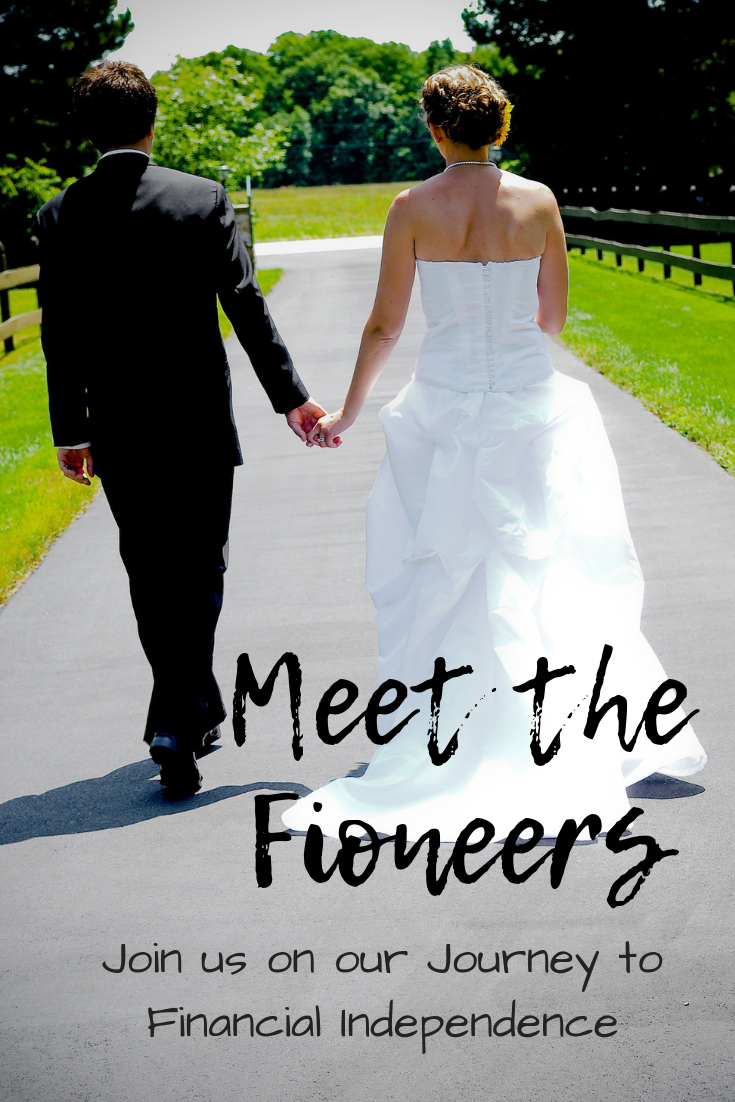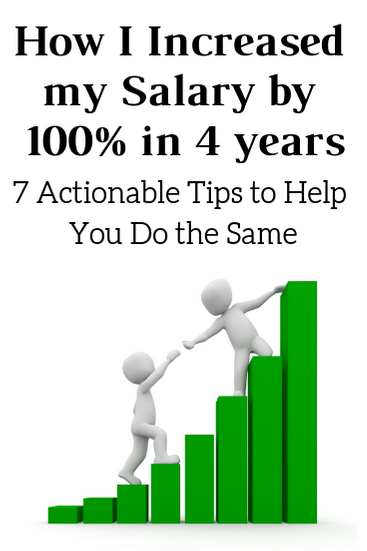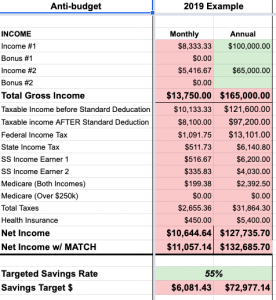
I met Laura through the Slow FI Enthusiasts Facebook group. I learned that after she had built her dog training business, she’s taken several extended work breaks. She’s also planning to take additional time off this fall.
I was interested in learning more, so I invited her to participate in a Slow FI Interview. And, let me tell you… this interview came at the perfect time for me.
I’m currently on a three-week road trip on our campervan (although I am writing this before leaving). While reviewing this interview, it was incredibly helpful to hear someone else’s story of taking extended work breaks and seeing that nothing fell apart in their business!
Let’s get into the interview!
1. Tell me a little bit about you.
I’m an adventurer at heart! I love to travel, live in small spaces, train dogs, and immerse myself in new experiences.
To monetarily sustain my wanderlust, I run my own online service dog training business and a dog training YouTube channel called DoggyU. I also work as a guide dog placement specialist where I travel around the country placing guide dogs. This is a really nice way to combine my love of travel and my passion for dog training. Since I’ve worked in the industry for thirteen years now, I also have tremendous flexibility and the opportunity to travel for work.
2. You have taken several work breaks, and I know you are planning another one this fall. Tell me more about the work breaks you’ve taken.
I’ve always been mobile and had mobile jobs. For context, I first fell in love with extended travel when I received an internship at a conservation center in Florida during college. I turned down a well-paying traditional business internship to spend the summer with no car and no cell phone on 8,000 acres in northern Florida. I was in heaven shoveling poop, feeding, and taking care of cheetahs, rhinos, giraffes, and more.
From then on, I was always interested in travel. That’s one of the reasons I took a job as an apprentice guide dog instructor as I was finishing my MPA program.
In that job, I learned to train and place guide dogs with clients around North America. I would travel to new locations every month and stay for 2-3 weeks while placing the guide dogs with clients. It’s been a tremendous opportunity to see the country. At this point, I’ve seen all 50 states and half of the nation’s national parks.
I took my first work break in 2017. At that time, I had left guide dog work and was running my own business. To be honest, I was worried the business would collapse if I took three weeks off. But I had itchy feet and wanted to see some national parks, so I decided to go for it.
My husband, our two dogs, and I loaded into a rented minivan and headed across the country. It only cost us $800 to rent the van for three weeks, and we brought it back with 9k miles on it! We saw 7 national parks (from the east coast to as far as Glacier and Yellowstone) and met up with friends along the way. We had an absolute blast.
And my business didn’t fall apart.
Not even a little. I answered emails as needed while driving and that was the extent of my work.
That first trip gave me the courage to do a 9-week trip the following year. I drove from Connecticut to California for my sister’s wedding in Yosemite. By that time, I had already recognized my need for work that was location flexible. This drove my focus on my YouTube channel and online dog training platform. After not working during the first month of the trip with my husband, I was able to do work while staying at my sister’s for the next month on a very part-time basis. This allowed me to reduce my stress around money and still enjoy the experience immensely.
This trip showed me that location flexibility was totally possible. And, I was capable of creating income streams that were flexible and could be scaled up or down as needed.
Over the last few years, I’ve continued to build up my business and different income streams. And, I did this while continuing my guide dog placements job. Recently, I’ve been faced with some physical and mental health challenges that have been the wake-up call I needed to downshift again.
Fortunately, I have a very understanding boss. He was able to accommodate my needs within the structure of my responsibilities. We worked together to come up with a more balanced travel schedule. As a result, I was able to schedule a longer time off in September to spend time with my sister in California. I’ll also have the opportunity to explore two new national parks.
One great thing about my online business is that it’s so flexible. I’ll simply scale back during this time, so I can be fully present during my adventures.
3. How did your decision to take breaks from work impact your quality of life?
Taking breaks from work helped to calm me down and provided a new perspective. As a newer business owner in 2017, I was afraid I wouldn’t make enough. Every month felt stressful, even though I’d never had issues making enough to cover expenses and my savings goals.
Taking the first cross-country trip loosened my grip and showed me what was possible. It didn’t change how I conducted business (yet). But, it allowed me to feel safe planning a second longer trip. The second trip proved that I was capable of doing remote work (before remote work was as common). I could make money and still get to enjoy travel and adventure.
After my second cross-country adventure, I started setting more boundaries. I stopped working on the weekends even though I knew that might affect my income (most dog training typically happens on nights and weekends). Saving weekends for myself helped to quell some of the overwhelm I felt about running a business.
I also hired a colleague around that time to cover the extra business I needed to turn down. This move created an additional income stream that didn’t directly take time in my schedule. It showed me that I could design my life the way I wanted. I could live a slower lifestyle and also diversify how I made a living so I could make a life.
As I mentioned above, I eventually found myself feeling burned out again. After moving back to my home state of Connecticut, I traveled frequently again for guide dog placements.
When I was in my 20s, I loved the pace of travel. It didn’t phase me. As I grow older (and partially because of the pandemic), my priorities have shifted. I don’t want to be traveling and doing a demanding job constantly, even if I love it. People have different seasons of life, and I think my season of hustling has come to a close.
I now want periods of time where I’m home with my husband and dogs. I want to set boundaries. I want to be in control of my online business and make it work for me. I want to make space for dog training projects I actually want to do. I want to be physically and mentally healthy. I want to foster deep connections with my family and friends.
This is why I spoke with my boss about my travel schedule and why I’m taking an extended break in September.
In September, I’ll have the opportunity to spend time with my sister who lives on the west coast. I’m really excited to have the opportunity to connect without feeling rushed.
4. What things in your life contribute most to your happiness and contentment?
Having autonomy contributes most to my happiness and contentment. I thrive on change, travel, and new experiences. I hate feeling stuck.
Having the autonomy to embrace a non-traditional life path has been a key factor in my happiness. When I can set up my external environment to align with my internal needs (balancing travel with connections with family and friends), I am most happy.
Embracing the principles of FI has contributed to flexibility and autonomy. And, I am so fortunate to have an awesome husband who supports everything I do.
5. How did the decision to build a business impact your financial goals or timelines?
The short answer is that building my own business dramatically improved my financial situation. I had previously been working in a non-profit organization, so within a year or so I had doubled and eventually nearly tripled my income.
Dog training is such that the harder I work, the more money I make. Over time, I hired another dog trainer. Then, when I decided to move across the country, I sold the business to that employee and started a new one in my new location.
After a while though, I realized that I missed guide work. So, I decided to go back to working at the same non-profit guide dog organization I previously worked for. This time, though, I had a lot more financial flexibility (significant emergency fund and savings, husband working at a better-paying job, more online income from DoggyU). This meant that I could take a lower-paying job, drop the majority of the in-person dog training, and still have time to focus on building out my YouTube channel and online business.
Running my own business (with different iterations over time) has taught me that I can make money in so many different ways. That provides me with a lot of peace of mind regardless of my FI timeline.
It has allowed my husband and me to consistently save a third of our income at various salaries. And, it also taught me that money isn’t the most important thing. As long as we live below our means, I can make decisions based more on lifestyle design than money.
6. What enabled you to start your own business and lose the consistency of a regular paycheck?
When I was starting my own business I was aware of the inherent risks and the potential financial instability. However, I was comforted knowing that my husband and I were capable of living simply. We could get by even if the business struggled initially.
We have always lived below our means, even on our small initial salaries. When I was 22, I bought my first house on my entry-level non-profit salary. I got a roommate to help cover the mortgage while my husband (then, boyfriend) lived at home for a year and paid off his college debt on a teacher’s salary. I’m very grateful that his parents gave him that opportunity, and that my parents helped guide me through the house-buying process at such a young age.
We have always been frugal by nature, and material possessions aren’t a huge priority to us. Continuing with those values (with just a little lifestyle inflation) has landed us in our mid-30s with a financial cushion, no debt besides our house, and a solid emergency fund. This is incredibly helpful in allowing me to make lifestyle-based decisions.
Even with our frugality and financial cushion, I took a part-time job during the first few months to help offset some of these risks. Thankfully, my business exploded and I was able to leave the part-time position after a short while.
7. How did your pursuit of FI help or hinder your ability to be location flexible?
Pursuing FI or slow FI bolsters my ability to take risks and pursue opportunities. It’s helped me build a skill-set that is marketable. Now, I know that I could start a business or make money wherever I am and as my needs and interests evolve over time.
It also helped me to consider flexibility as I was starting my business. Depending on the phase of life I’m in (or what expenses are coming up), I can dial up or dial down my online dog training business. Building a flexible business allows me to respond to how I’m feeling at the time and feel comfortable making decisions that might not be wholly based on money.
8. Why and when do you think someone might consider “downshifting?”
I think “downshifting” can always be on the table, especially once you’re out of consumer debt. If you’re comfortable living simply and getting creative, downshifting, or finding work you’re passionate about is a great option.
Lastly, if your job is compromising your health, I would recommend seriously considering a downshift. We only get one life.
9. What advice do you have for someone considering a similar decision?
Do what you need to do to get comfortable with the decision, and then, go for it.
Consider what you value most. For me, that’s time and location flexibility. For you, it might be something different.
Figure out how to test your ideas and take small steps towards them. If you’re not used to taking more than a week of vacation, ask for two. See how it feels then make a plan from there. Experiment with a side hustle to see what interests you outside of your traditional income stream.
I only realized that time and location flexibility were possible for me after I took small steps toward them.
Thank you so much, Laura, for sharing your story with us!
I love that Laura has been able to take several extended work breaks. These breaks have allowed her to travel and live what she calls a “location flexible” lifestyle. There are certain times when she does need to be at her home in Connecticut. But, her work allows her to travel and take significant time off.
Many people think that only entrepreneurs or self-employed people can take work breaks. However, Laura actually got approval from her boss at her nonprofit guide dog placement job to take time off in September.
I also have plenty of other examples in Slow FI Interviews where people negotiated time off with their existing employer, including:
- Marjolein from Radical FIRE who took a mini-retirement
- Mel from Modest Millionaires who took a year-long sabbatical
- Diania who runs the EconoMe Conference took several months off to walk the Camino de Santiago in Spain
- Kamran who took the summer off from his Fortune 50 job.
There are a few things that have contributed to Laura’s ability to take work breaks and be location flexible. She has fairly low expenses and no debt (besides her mortgage). Having low expenses has allowed her to save, even when she lived on a very low salary.
Over time, she’s also built additional streams of income through her dog training business and online dog training courses. Because of how she structured her business, she can dial things up or down based on what she’s doing at any given time.
Both her low expenses and multiple income streams have given her the confidence to negotiate and take time off of work.
The last thing that Laura shared that I want to reinforce is the importance of experimentation. If you’d like to travel more (but you’ve never taken more than a week off at a time), ask for two weeks off. You can gradually increase this over time. If you are interested in building additional income streams, you can experiment with various side hustles to see what you’d enjoy doing.
If you’d like to follow Laura’s journey, you can find her in the following places:
- YouTube Channel: Doggy U
- Instagram: @Doggy.U
























